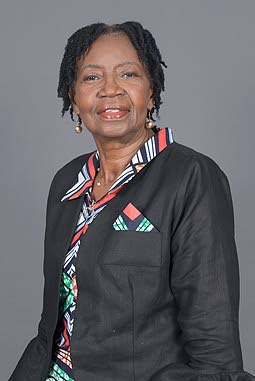Representation: The bane of Tobago’s political life, 1889-1925

Dr Rita Pemberton
The political ambitions of the growing black landowning class were stymied when the ruling class willingly surrendered its legislative powers to the imperial government.
The surrender was made by the Tobago Constitution Act of 1876, which abolished all the functions and powers of the House of Assembly and demoted the island to crown colony status. This was a response to the Belmana War of May 1876, when the black population exploded against oppression, and landlessness.
There were rigid class distinctions between the white elite ruling planter class and the black labouring class, which, devoid of representation in the island’s administration, had recourse to resistance to give expression to its dissatisfaction.
The reaction of the members of the ruling class emanated from the recognition of their vulnerability against the superior numbers of the black population and the damage such resistance would pose to their interests. They made the exchange in the effort to maintain the status quo, for they refused to consider the notion of black representation in the administration, with fears of black reprisal action against whites, should such a situation develop. They traded control of the purse for expected military support from the imperial government to protect themselves from the labouring population, as well as financial support for the failing sugar industry, neither of which was on the agenda of the imperial government.
The union of Trinidad and Tobago into one colony raised the question of Tobago’s representation in the colony. It was determined that Tobago should be represented at the Legislative Council of Trinidad and Tobago by its chief administrative officer, the Commissioner for Tobago, and one other person. In keeping with the system of crown colony government, the representative was nominated by the governor of the colony.
This arrangement inflicted a further blow to the political ambitions of Tobago’s emerging class of black landowners, who were even further removed from the corridors of political power in the colony, and for whom there was no mechanism through which to convey their concerns to the decision-makers of the Legislative Council in Trinidad.
The fact that the Governor selected the representative was an assurance that it would be a planter or planter supporter who would get the nod.
The Tobago planters were in for disappointment, for they too became concerned about their political power, as it became clear from early on that the dictates would come from central government in Trinidad, which was controlled by the large wealthy planter class.
During the first 36 years of union, Tobago was represented by five nominated members, along with the Commissioner for Tobago.
The first was John Mc Killop, who held a lease on Bacolet Estate.
Having declared himself bankrupt in 1893, he was replaced by George Horatio Mc Eachrane, a partner in the company Henderson and Co. Mc Eachrane, who served as the island’s representative from 1893-1903, was more of an absentee representative because of his record of irregular attendance at meetings. This was due to the poor state of interisland communications, which was heavily dependent upon an irregular steamer service.
In an attempt to help to rectify the situation, Mc Eachrane suggested that matters of interest to Tobago should be scheduled for two special sessions per year, but the suggestion fell on deaf ears. Although he was absent from all sessions from 1898-1900, when he submitted written contributions, McEachrane was reappointed Tobago’s representative in 1903.
Having held that position for ten years, he was unable to make any meaningful contribution to matters of concern to Tobago in the Legislative Council.
The second nominee was the Englishman Henry Lushington Thornton, the joint owner of Cocowattie estate. Like his predecessor, Thornton was able to attend few meetings because the irregular sailing of the steamer required him to spend long periods away from his estate. When he went to England from 1904-1905, no replacement was named, and from 1906- 1913 he stopped attending meetings altogether.
It became very difficult to convince Tobago-based planters or merchants to accept a nomination to this position because of its demands on time and resources. As a result, the governor sought to deal with the situation by nominating one members of the council to speak on Tobago’s interests.
The first such nomination was made in 1913, when Mr. Moodie from San Fernando was nominated. Amid complaints from members of the Tobago Planters Association that Tobago had been omitted from the 1919 Road Development Committee, in 1920 Thorlief Orde, manager of Louis D’Or Estate, was offered temporary nomination, which he declined, because with the existing seamer schedule, four-six days were required to attend meetings
Albert H Cipriani, resident of Port of Spain and owner of several coconut estates in Tobago, was nominated as a special representative for Tobago. He became bankrupt in 1923 and had to withdraw from the council.
Hence Tobago had no resident representative for ten years and the quality of representation across the period was weak at best.
During the first 36 years of union, then,Tobago was grossly underrepresented in the Legislative Council of Trinidad and Tobago and for a considerable part of the period, it had no representation at all.
While class antagonisms continued to prevail on the island, the concerns of neither class received priority consideration in the council. The lower class remained totally unrepresented, while the elite found themselves subjugated to the powerful ruling class of Trinidad planters.
Both groups became more embittered, and as frustrations abounded, they both became engaged in a quest for adequate representation from 1925 onwards.


Comments
"Representation: The bane of Tobago’s political life, 1889-1925"